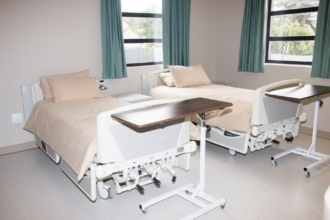How hospice in assisted living works
- Payment
- Care coordination
- Pain and symptom management
- Medical equipment
- Psychological and spiritual support
Assisted living facilities exist on the spectrum between independent living communities and nursing homes. Residents of assisted living facilities don’t require 24-7 care, but they do need certain support services such as medication management and mobility assistance.
According to the American Health Care Association,more than 800,000 people in the U.S. live in assisted living communities.
Why people choose hospice in assisted living
You may wonder why a resident who becomes terminal doesn’t just move to a nursing home or a dedicated hospice facility. Enter the concept of aging-in-place, which the CDC defines as the “ability to live in one’s own home and community safely, independently, and comfortably, regardless of age, income, or ability level.”
Hospice care is all about making terminally ill individuals comfortable in their last days, and what’s more comfortable than being in your own home?
With the exception of Idaho, Mississippi, Montana, and North Dakota — states that don’t allow hospice care in these types of facilities — medical staff from many hospice companies visit patients in their homes to provide physical and emotional comfort to them and support to their family members in their end-of-life decision-making.
So how does hospice in assisted living work? If you’re looking to start a hospice in one of these communities, keep reading to learn the distinctions of this terminal care option.
How hospice in assisted living works: 5 key areas
1. Payment
While seniors in assisted living communities typically pay out of pocket for their residency, hospice care is generally covered by either private insurance or Medicare. This includes the care team, equipment, medications, and comfort therapies.
2. Care coordination
With two different teams working together, it’s important to stay on the same page to ensure seniors have the best end-of-life care while remaining in the assisted living community. Your hospice interdisciplinary group will consult with the assisted living team to create a clear plan for the patient, making sure there are no gaps in their daily routine and that they have the care they need.
3. Pain and symptom management
Though a senior may have already been receiving help from the assisted living team with regard to managing their medication, their terminal diagnosis will likely require a more complex regimen that will focus on palliative rather than curative care. Your team will be responsible for developing and administering this regimen.
4. Medical equipment
A terminal condition often comes with physical ailments that require the use of medical equipment and devices such as hospital beds, wheelchairs, walkers, and bedside commodes. Your hospice will be responsible for supplying and transporting these pieces of equipment to a senior’s home as their needs evolve, based on their care plan.
5. Psychological and spiritual support
Beyond physical changes, a terminal diagnosis often comes with a host of psychological and spiritual challenges for afflicted seniors and their families. Your hospice care team will need to ensure seniors understand their diagnosis and symptoms and help them formulate new life goals and wishes as they approach their final days.
For the family, your team may assist with funeral arrangements, offer spiritual guidance from a chaplain or other religious figure, and provide bereavement support posthumously.
Smooth, effective hospice operations — no matter where you serve patients
Jotform Enterprise is a secure hospice management solution that promotes efficient hospice operations in standalone facilities, assisted living communities, hospitals, or wherever your patients reside.
Not only can it help you ensure consistent process outcomes and compliance with hospice regulations, but it also helps streamline your intake and discharge procedures with a number of easy-to-build, customizable forms:
- Hospice consent form: Ensure you have a proper record of a patient’s acceptance of care.
- Hospice spiritual assessment form: Use this form to review and log the spiritual and religious needs of your patient so you can include them in the patient’s care plan.
- Palliative care assessment form: Assess the care needed for your patient to be comfortable while they’re receiving hospice care.
You can also use Jotform to capture signatures from patients, their families, your physicians, and other staff members directly in the forms you create — all part of a seamless workflow.
In addition, hospice administrators can assign custom permissions to different users, ensuring that only the right people see confidential patient information. Start building forms for your hospice business today.


















Send Comment: